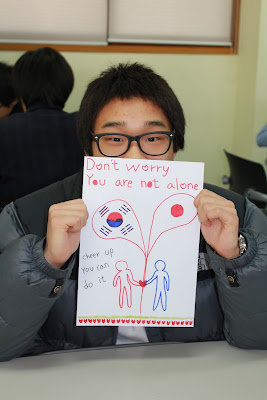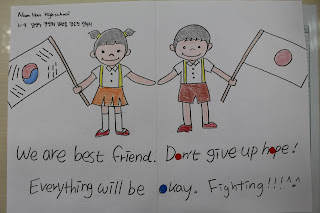We have moved onto mythology this week. My students have covered some of it in different English classes, so they asked me to carry it over to the conversation classroom. This is LESSON 4 for my second grade high school students. They participated SO well and seemed to really love this topic.
Basic lesson plan:
Greet students and chat for a few minutes.
Introduce slang of the day. (Today's slang is 'Rookie', as in a new member to a team or group.)
Introduce the topic of mythology, and ask for their definitions thereof.
Show them the PowerPoint slide show. Ask them about the myths and explain a few. (I think it might be best if you(the teacher) brushes up on your own mythology, because they ask quite a few questions.)
There are two relevant English sayings that we discussed.
- Achilles heel. "What is your weakness?"
- To open Pandora's box. "Doing something that will have bad consequences."
*There are many video clips and web links that the kids love.
(for the video clip from Troy, skip to the part where Achilles gets shot in the heel).
*pics to follow
Mythology lesson
More PowerPoint presentations from Allan Ward
























